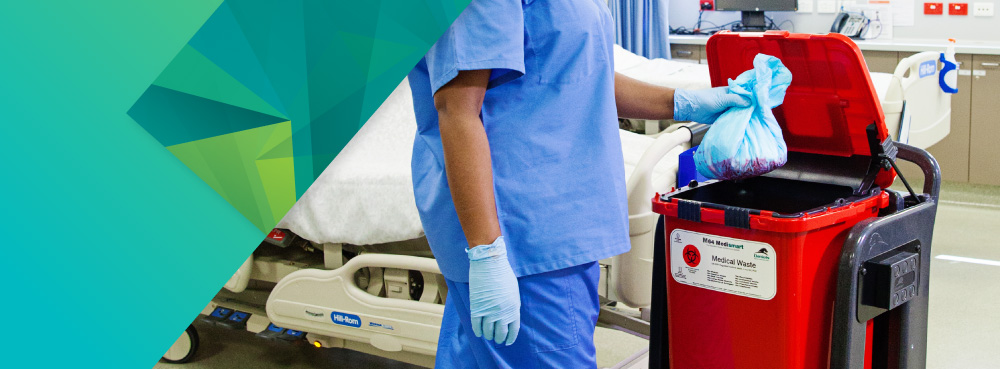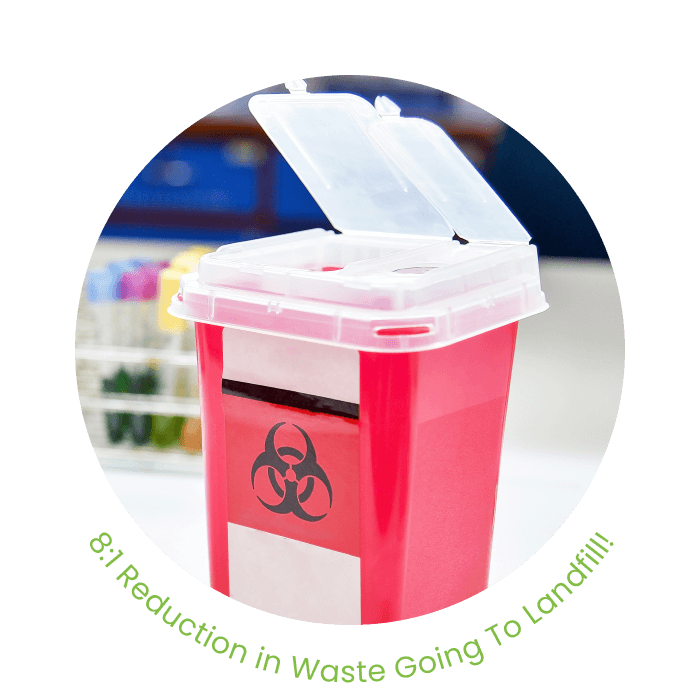Past Clean-up: Ensuring Security with Professional Medical Waste Removal
Past Clean-up: Ensuring Security with Professional Medical Waste Removal
Blog Article
Stay Ahead of Rules: Expert Guidance on Medical Waste Disposal
In a world where the health care market is constantly progressing, it is essential for clinical centers to stay in advance of regulations when it comes to the appropriate disposal of medical waste. From recognizing the different groups of medical waste to executing the appropriate collection and segregation techniques, this discussion will certainly give valuable insights and workable ideas to aid centers stay ahead of policies in the ever-changing landscape of clinical waste disposal.
Recognizing Medical Waste Categories
Understanding medical waste groups is vital for correct disposal and administration in medical care facilities. Medical waste describes any kind of waste created by medical care activities that might present a risk to public health and wellness or the setting. It is crucial to classify clinical waste precisely to guarantee its safe handling, disposal, therapy, and transport.
There are numerous categories of medical waste that health care facilities require to be accustomed to. The most usual groups consist of transmittable waste, pathological waste, sharps waste, pharmaceutical waste, and chemical waste. Each category has particular standards and guidelines for its proper management and disposal.
Pathological waste refers to human cells, organs, or body parts that need unique handling and disposal. Drug waste consists of expired, extra, or infected medicines that need mindful handling and disposal.
Staying Up-To-Date With Regulatory Changes
Remaining current with regulative adjustments is essential for health care facilities to guarantee compliance and appropriate monitoring of medical garbage disposal. medical waste removal service. With regulations frequently developing, it is essential for healthcare centers to remain current to avoid charges, penalties, and prospective injury to the environment and public health and wellness
To remain ahead of governing changes, healthcare centers need to develop a system for surveillance and tracking updates. This can be done by signing up for governing e-newsletters, attending workshops and seminars, and proactively taking part in market associations. In addition, facilities ought to assign a personnel or group accountable for remaining informed and disseminating info to pertinent stakeholders.
Normal communication with regulatory firms is also vital. Healthcare centers ought to develop partnerships with regional, state, and government companies to guarantee they know any changes in policies that might impact their waste monitoring methods. This can be done through regular conferences, engagement in public comment durations, and positive engagement with regulative agencies.
Furthermore, healthcare facilities should take into consideration partnering with waste administration business that specialize in medical garbage disposal (medical waste disposal services with WasteX). These business are frequently fluent in the current regulations and can supply advice and assistance to guarantee conformity
Implementing Appropriate Collection and Segregation Methods
To properly take care of clinical waste disposal, health care facilities must establish proper collection and segregation methods according to regulative standards. Carrying out these techniques makes certain the secure handling and disposal of potentially dangerous materials, shields the environment, and decreases the threat of injuries and infections to healthcare employees and the public.
Appropriate collection and partition methods entail making use of assigned containers and classifying systems. Medical care centers should offer plainly classified containers for different kinds of clinical waste, such as sharps, infectious waste, pharmaceutical waste, and click site non-hazardous waste. These containers should be color-coded and clearly marked to avoid confusion and advertise very easy recognition.
In addition, medical care centers ought to train their team on the appropriate procedures for gathering and setting apart clinical waste. This consists of educating them on the different kinds of waste, the appropriate containers to make use of, and the importance of following laws and guidelines. Normal training sessions and correspondence course ought to be performed to make certain that team members remain updated on best techniques.
Moreover, health care facilities ought to develop a system for useful link routine collection and disposal of medical waste. This may involve partnering with accredited waste administration companies that specialize in medical garbage disposal. These companies will certainly make certain that the gathered waste is moved and gotten rid of in compliance with regulative needs.
Selecting the Right Disposal Approaches
Incineration is among the most effective and typical approaches for dealing with specific types of clinical waste, such as pathological waste and sharps. It entails the regulated burning of waste at high temperatures, lowering it to ash. Nonetheless, incineration can release hazardous toxins into the air and add to air contamination.

Various other disposal methods include chemical therapy, microwave treatment, and landfilling. Chemical treatment includes the use of chemicals to sanitize and click this link neutralize the waste. Microwave therapy makes use of microwave energy to warmth and disinfect the waste. Landfilling includes hiding the waste in a marked garbage dump area (medical waste disposal services with WasteX). Landfilling should be the last resort due to the potential threat of contamination to soil and groundwater.
Ensuring Compliance Through Paperwork and Training
After thoroughly taking into consideration the suitable disposal approaches for medical waste, medical care centers should guarantee compliance with guidelines and decrease environmental impact by executing reliable paperwork and training treatments. This step is crucial in maintaining a secure and sustainable setting for both healthcare employees and the general public.

Healthcare workers who manage medical waste should get appropriate training on waste segregation, handling, and disposal treatments. By supplying thorough training, health care centers can empower their personnel to make enlightened decisions and decrease the danger of improper waste disposal.
Conclusion
Finally, staying ahead of policies in medical waste disposal is critical for medical care facilities. medical waste removal services. Understanding the different classifications of medical waste, staying upgraded with regulatory modifications, carrying out correct collection and partition techniques, picking the appropriate disposal techniques, and ensuring conformity with documentation and training are all crucial steps. By adhering to these guidelines, health care companies can properly take care of and dispose of medical waste in a accountable and risk-free fashion
From recognizing the various classifications of medical waste to implementing the best collection and partition methods, this conversation will give workable tips and beneficial insights to assist facilities remain ahead of policies in the ever-changing landscape of clinical waste disposal. - medical waste disposal services with WasteX
The most common categories consist of contagious waste, pathological waste, sharps waste, pharmaceutical waste, and chemical waste. Medical care centers ought to offer clearly classified containers for various types of clinical waste, such as sharps, infectious waste, pharmaceutical waste, and non-hazardous waste. Healthcare centers need to establish a comprehensive system to videotape and track all aspects of medical waste disposal, consisting of kinds of waste created, quantities, and disposal methods utilized. Health care employees who take care of medical waste must obtain ideal training on waste segregation, managing, and disposal procedures.
Report this page